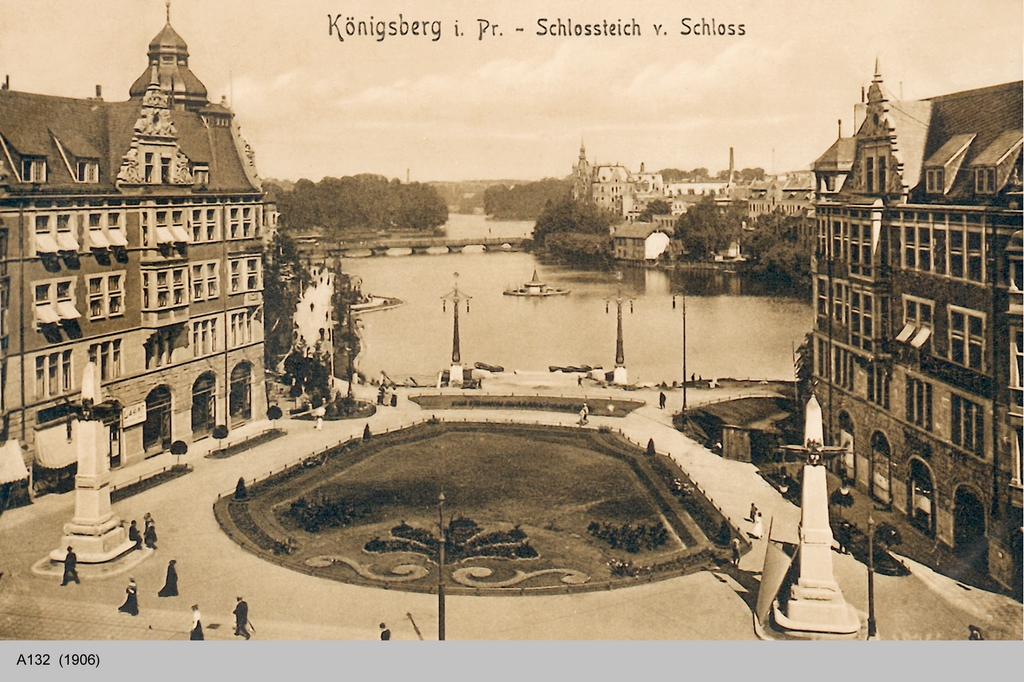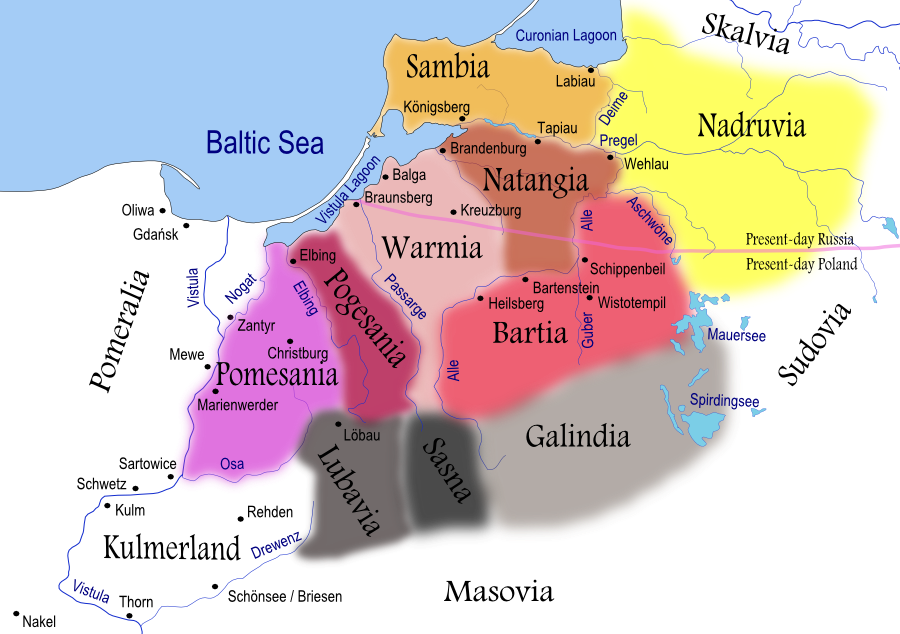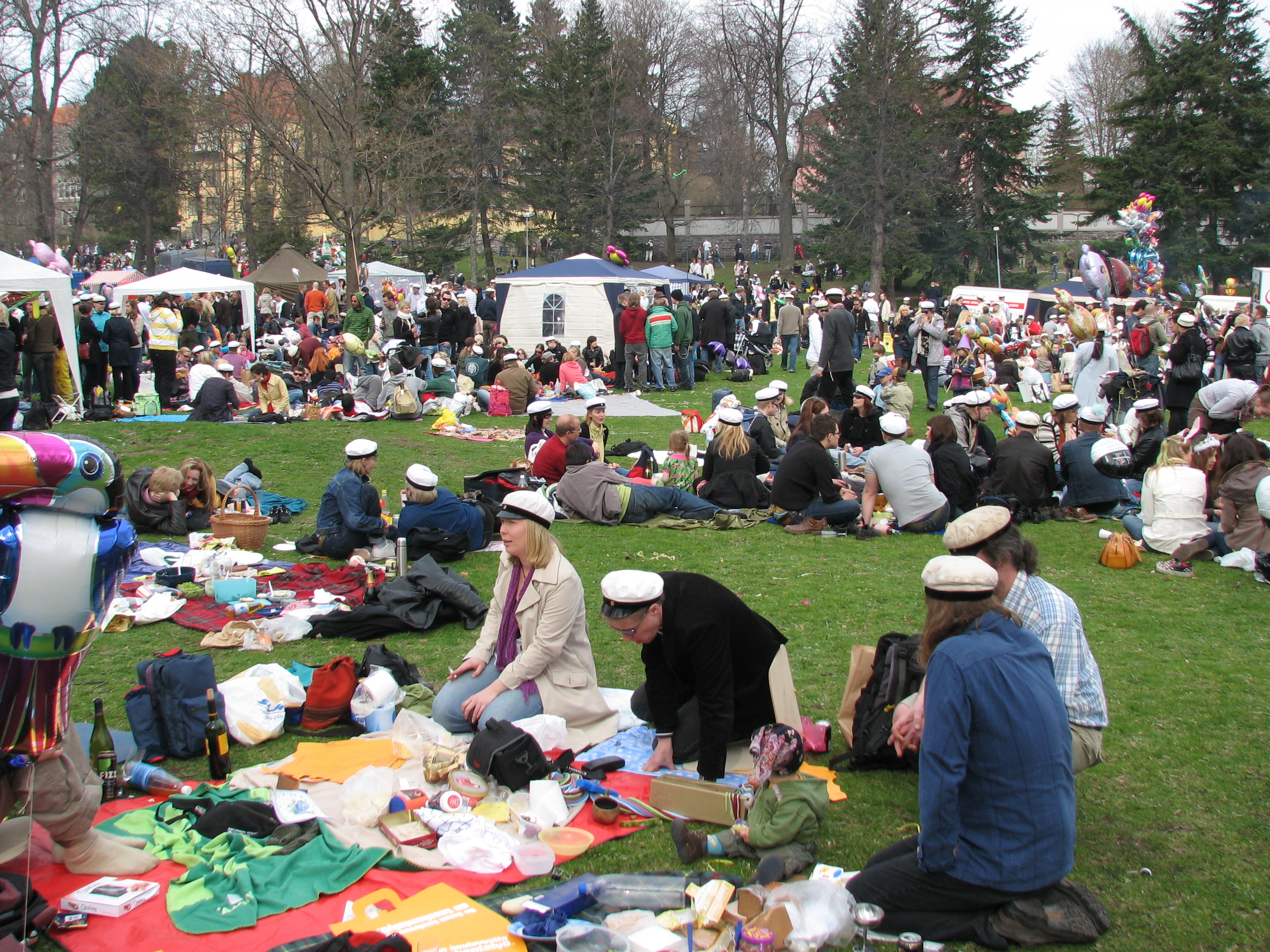|
Schlossteich Königsberg
The Lower Pond () is a large artificial pond in northern Kaliningrad, Russia. It was known as the Schlossteich while part of Königsberg, Germany, until 1945. The pond is about one kilometre long, north to south. Along its length, its width varies between about 50 and 100 metres. The source of the water is from the north. The water eventually drains underground down to the river Pregel to the south. During the winter months, the pond can freeze over. History The pond, first documented by the Teutonic Knights in 1256, was created by damming the Katzbach stream which led to the Pregel.Albinus, p. 276 Mills constructed nearby caused the pond to be known as the Mühlenteich (mill pond). The Teutonic Knights' infirmary was constructed along the southwestern edge of the pond, while the Magdalenenkloster (Magdalene monastery) was built on the southern shore. A second pond, the Oberteich or Upper Pond, was created north of the first pond in 1270. By the time of the Duchy of Prussia' ... [...More Info...] [...Related Items...] OR: [Wikipedia] [Google] [Baidu] |
Kaliningrad
Kaliningrad,. known as Königsberg; ; . until 1946, is the largest city and administrative centre of Kaliningrad Oblast, an Enclave and exclave, exclave of Russia between Lithuania and Poland ( west of the bulk of Russia), located on the Pregolya, Pregolya River, at the head of the Vistula Lagoon, and the only Port#Warm-water port, ice-free Russian port on the Baltic Sea. Its population in 2020 was 489,359. Kaliningrad is the second-largest city in the Northwestern Federal District, after Saint Petersburg and the List of cities and towns around the Baltic Sea, seventh-largest city on the Baltic Sea. The city had been founded in 1255 on the site of the ancient Old Prussians, Old Prussian settlement ''Twangste'' by the Teutonic Knights during the Northern Crusades, and named ''Königsberg'' ("king's mountain") in honor of King Ottokar II of Bohemia. A Baltic port city, it successively became the capital of the State of the Teutonic Order, the Duchy of Prussia and the provinces of ... [...More Info...] [...Related Items...] OR: [Wikipedia] [Google] [Baidu] |
Burgkirche (Königsberg)
The Burgkirche was a Continental Reformed church, Reformed Protestant church of the Prussian Union of churches, Prussian Union in Königsberg, Prussia. History After the conversion of the House of Hohenzollern, Hohenzollern elector John Sigismund, Elector of Brandenburg, John Sigismund of Brandenburg, also List of monarchs of Prussia, Duke of Prussia from 1612, the first Calvinism, Calvinist service was performed in 1616 by the Landgraviate of Hesse-Kassel, Hessian court chaplain Johannes Crocius in a hall of Königsberg Castle. In 1662 the 'Great Elector' Frederick William, Elector of Brandenburg, Frederick William ordered the building of a new Reformed church and Burgschule (Königsberg), Latin school in the Burgfreiheit quarter near the castle, granting land near a slaughterhouse. The transfer of land only occurred in 1665, however, and the initiative was halted until the 1680s. In 1687 the court expanded the grounds for the church by purchasing a garden on the Lower Pond (Kali ... [...More Info...] [...Related Items...] OR: [Wikipedia] [Google] [Baidu] |
Paper Lantern
A paper lantern is a lantern made of thin, brightly colored paper. Paper lanterns come in various shapes and sizes, as well as various methods of construction. In their simplest form, they are simply a paper bag with a candle placed inside, although more complicated lanterns consist of a collapsible bamboo or metal frame of hoops covered with tough paper. Origin Paper lanterns are likely derived from earlier lanterns that used other types of translucent material like silk, horn, or animal skin. The material covering was used to prevent the flame in the lantern from being extinguished by wind, while still retaining its use as a light source. Papermaking technology originated from China from at least AD 105 during the Eastern Han dynasty, but it is unknown exactly when paper became used for lanterns. Poems about paper lanterns start to appear in Chinese history at around the 6th century. Paper lanterns were common by the Tang dynasty (AD 690–705), and it was during this period ... [...More Info...] [...Related Items...] OR: [Wikipedia] [Google] [Baidu] |
German Student Corps
Corps (or Korps; "''das ~''" ('' n''), (''sg.''), (''pl.'')) are the oldest still-existing kind of '' Studentenverbindung'', Germany's traditional university corporations; their roots date back to the 15th century. The oldest corps still existing today was founded in 1789. Its members are referred to as corps students (''Corpsstudenten''). The corps belong to the tradition of student fraternities which wear couleur and practice academic fencing. Most corps are organized in two federations, the '' Kösener Senioren-Convents-Verband'' (''KSCV'') and the ''Weinheimer Senioren-Convent'' (''WSC''). Together, they comprise 162 Corps throughout Germany, Austria, Belgium, Estonia, Latvia, Hungary, Switzerland and Lithuania. The German Student Corps were traditionally recruited from the nobility, royalty, and social elite, and are traditionally viewed as more aristocratic and elitist than other German student fraternities such as the Catholic Cartellverband and the Burschenschaften ... [...More Info...] [...Related Items...] OR: [Wikipedia] [Google] [Baidu] |
Walpurgis Night
Walpurgis Night (), an abbreviation of Saint Walpurgis Night (from the German language, German ), also known as Saint Walpurga's Eve (alternatively spelled Saint Walburga's Eve) and Walpurgisnacht, is the Vigil#Eves of religious celebrations, eve of the Christianity, Christian feast day of Saint Walpurga, an 8th-century abbess in Francia, and is celebrated on the night of 30 April and the day of 1 May. This feast memorialization, commemorates the canonization of Saint Walpurga and the movement of her relics to Eichstätt, both of which occurred on 1 May 870. Saint Walpurga was hailed by the Christians of Germany for battling "pest, rabies, and whooping cough, as well as against witchcraft". Christians Christian prayer, prayed to God in Christianity, God through the Intercession of saints, intercession of Saint Walpurga in order to protect themselves from witchcraft, as Saint Walpurga was successful in conversion to Christianity, converting the local populace to Christianity. ... [...More Info...] [...Related Items...] OR: [Wikipedia] [Google] [Baidu] |




